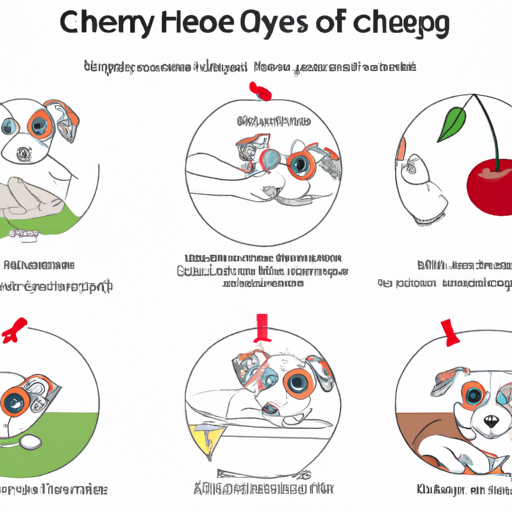As a loving pet parent, it’s heartbreaking to witness your furry friend suffering from any health issue, especially one that affects their eyes. Cherry eye, a common term for prolapsed gland of the nictitating membrane, is an eye condition prevalent among certain breeds of dogs. While it’s always advisable to seek professional veterinary care for such problems, understanding the condition and knowing how to manage it at home can significantly aid in your dog’s recovery.
Table of Contents
- Understanding Cherry Eye
- Signs and Symptoms
- Breeds Prone to Cherry Eye
- At-Home Care for Cherry Eye
- Professional Treatment Options
- Preventing Cherry Eye
- Frequently Asked Questions
Key Takeaways
- Cherry eye is a common condition among certain dog breeds.
- Early detection and treatment can prevent further complications.
- Some at-home remedies can help manage the condition but are not cures.
- Veterinary care is essential for proper treatment.
Understanding Cherry Eye
Cherry eye is a condition where the gland of the third eyelid, also known as the nictitating membrane, prolapses or “pops out,” giving the appearance of a red, swollen mass in the corner of the dog’s eye. While it’s not a fatal condition, it can be uncomfortable for the dog and, if left untreated, can lead to more serious eye problems.
Signs and Symptoms
The most noticeable sign of cherry eye is a red, swollen mass in the corner of the dog’s eye, resembling a cherry—hence the name. Other symptoms include excessive tearing, squinting, pawing at the eye, and mucousy discharge. If your dog exhibits any of these signs, it’s crucial to reach out to your vet and also familiarize yourself with home care steps you can take.
Breeds Prone to Cherry Eye
Certain breeds are more prone to developing cherry eye, including Bulldogs, Beagles, Cocker Spaniels, and Bloodhounds. However, any breed can develop the condition, so it’s vital to keep a close eye on your dog’s eye health, regardless of their breed.
At-Home Care for Cherry Eye
While there’s no definitive cure for cherry eye that you can administer at home, there are steps you can take to alleviate your dog’s discomfort and prevent the condition from worsening.
-
Keep the Eye Clean: Regularly clean the affected eye with a warm, damp cloth to remove any discharge and prevent infection.
-
Use Eye Drops: Over-the-counter eye drops can help reduce inflammation and keep the eye lubricated.
-
Prevent Scratching: Use an Elizabethan collar or similar device to prevent your dog from scratching or pawing at the eye, which could cause further damage.
Remember, these are temporary solutions and not a cure. It’s essential to seek professional veterinary care for proper treatment.
Professional Treatment Options
Most vets will recommend surgery to reposition the prolapsed gland. This procedure is generally safe and has a high success rate. Alternatively, your vet might suggest a steroidal or non-steroidal anti-inflammatory drug to reduce swelling and inflammation. Always consult your vet for the best course of action for your pet.
Preventing Cherry Eye
While it’s not always possible to prevent cherry eye, regular eye exams and prompt attention to eye issues can help catch the condition early before it becomes more serious.
Frequently Asked Questions
1. Is cherry eye painful for dogs?
While cherry eye is not typically painful, it can cause discomfort and irritation.
2. Can cherry eye go away on its own?
In some cases, the gland may return to its normal position without treatment, but it’s still important to seek veterinary care to prevent further complications.
3. Is surgery the only option for treating cherry eye?
While surgery is the most common treatment, in some cases, vets may recommend medication to reduce inflammation and swelling.
This article gives a more in-depth look into eye problems in dogs, including cherry eye.
For more comprehensive information on various breeds prone to cherry eye, visit this page.
For tips on how to properly clean your dog’s eyes at home, refer to this guide.
And finally, for more information on how to prevent common eye problems in dogs, check out this resource.
Remember, as a caregiver, your dog relies on you for their health and well-being. Always keep a watchful eye on any changes in their behavior or appearance, and don’t hesitate to seek veterinary care when necessary.



